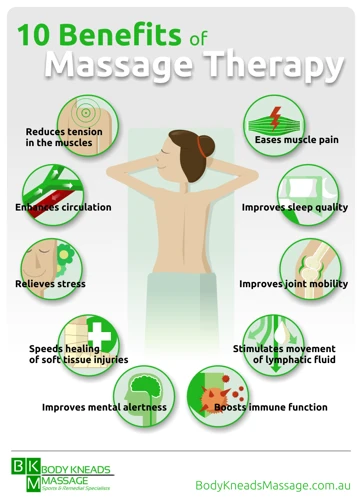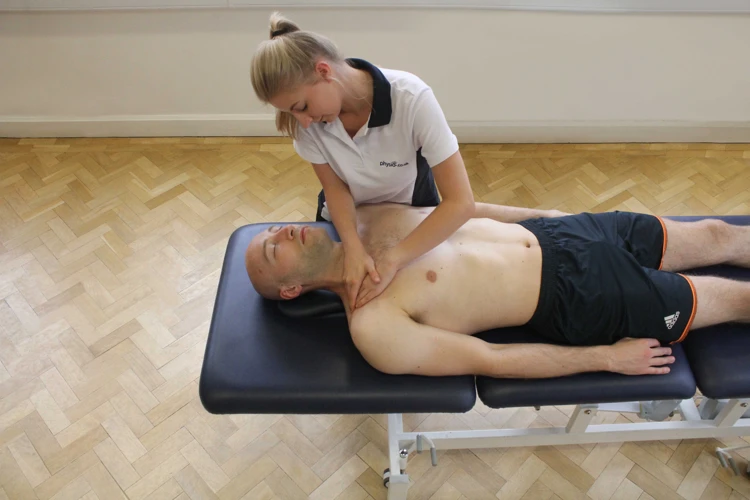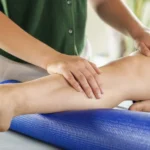If you’ve ever experienced persistent pain, muscle tension, or stiffness, you know how challenging it can be to find lasting relief. That’s where remedial massage comes in. Unlike a typical relaxation massage, remedial massage is a targeted, therapeutic treatment designed to address specific physical issues by applying a range of specialized techniques. Whether you’re recovering from an injury, dealing with chronic discomfort, or simply looking to enhance your mobility, remedial massage can be a game-changer. In this article, we’ll break down what remedial massage is, how it works, the numerous benefits it offers, and the various techniques used to tailor treatments to your unique needs. Curious about how remedial massage can help you feel better and move more freely? Let’s dive in!
Benefits of Remedial Massage

Physical Benefits
Remedial massage is beneficial in improving physical health and wellbeing. It can help relieve muscular tension, reduce pain and inflammation, improve blood circulation, increase joint mobility and flexibility, reduce stress levels and enhance the quality of sleep. It can also help reduce the symptoms of chronic pain, such as headaches, neck pain and lower back pain.
Mental Benefits
Remedial massage has also been found to improve mental wellbeing, with benefits such as improved mental clarity, stress relief, improved mood, and increased relaxation. It can also help reduce anxiety levels, improve concentration and promote better decision making. Additionally, it can help reduce the symptoms of depression and improve overall quality of life. For those looking for a natural way to manage their mental health, remedial massage in Australia is an excellent choice.
Techniques Used in Remedial Massage

Swedish Massage
Swedish massage is a gentle form of massage that uses long strokes, kneading, deep circular movements, vibration and tapping to help relax and energize you. It is a therapeutic massage that focuses on the deeper layers of muscle tissue.
Deep Tissue Massage
Deep tissue massage is designed to relieve severe tension in the muscle and the connective tissue or fascia. This type of massage focuses on the muscles located below the surface of the top muscles. Deep tissue massage is often recommended for individuals who experience consistent pain, are involved in heavy physical activity, such as athletes, and patients who have sustained physical injury.
Sports Massage
Sports massage is specifically designed for people who are involved in physical activity. This type of massage is used to help prevent injuries, to prepare the body for athletic activity and maintain it in optimal condition, and to help athletes recover from workouts and injuries.
Trigger Point Therapy
Trigger point therapy is a bodywork technique that involves the applying of pressure to tender muscle tissue in order to relieve pain and dysfunction in other parts of the body. A trigger point is a tight area within muscle tissue that causes pain in other parts of the body. A remedial massage therapist can identify trigger points and use specific techniques to release them.
Types of Remedial Massage

Relaxation Massage
Relaxation massage is a gentle type of massage that uses long strokes, kneading, circular movements, vibrations, and tapping to help you relax. This type of massage is usually used to improve circulation and relieve minor muscle aches and pains.
Therapeutic Massage
Therapeutic massage is a type of massage that focuses on relieving pain and discomfort. This type of massage uses a variety of techniques, including deep tissue massage, trigger point therapy, and stretching, to help reduce pain and improve mobility.
Remedial Massage
Remedial massage is a type of massage therapy that focuses on treating musculoskeletal imbalances and injuries. It uses specific techniques, such as deep tissue massage, myofascial release, and trigger point therapy, to help reduce pain and improve mobility. What is remedial massage good for? It is particularly beneficial for the treatment of chronic pain, sports-related injuries, and postural imbalances.
What to Expect from a Remedial Massage
Preparing for a Remedial Massage
Before your massage, your therapist will ask about any medical history that might affect your treatment. They may also ask about lifestyle habits, exercise routine, and areas of discomfort. Your therapist may also ask you to fill out a form or questionnaire before the massage to better understand your condition.
During a Remedial Massage
Your massage therapist will then use oils and lotions to help reduce friction on the skin, as well as special massage techniques to target the affected areas. These techniques can range from light, gentle strokes to deep tissue massage. Depending on the condition and your preference, the massage therapist may also use heat, cold, or ultrasound to help with relaxation and reduce pain.
After a Remedial Massage
After your massage, the therapist may suggest some stretching exercises or lifestyle changes to help you maintain the effects of the massage. Your therapist may also recommend certain exercises to help you avoid any further injury or pain. It is important to follow your therapist’s advice and to drink plenty of water after the massage to help your body flush out any toxins that may have been released during the massage.
Frequently Asked Questions
Benefits of Remedial Massage
- Pain Relief
- Remedial massage helps to alleviate pain associated with muscle tightness, injury, or chronic conditions. By targeting specific areas of discomfort, it can reduce inflammation, promote healing, and provide lasting pain relief.
- Improved Flexibility and Mobility
- By working on tight muscles and fascia (connective tissue), remedial massage can increase flexibility, range of motion, and joint mobility, which is especially beneficial for individuals recovering from injury or experiencing stiffness from conditions like arthritis.
- Increased Circulation
- The techniques used in remedial massage help stimulate blood flow and improve circulation, which delivers oxygen and nutrients to muscles and tissues, aiding in the healing process and reducing swelling or fluid retention.
- Faster Recovery from Injury
- Remedial massage can assist in the recovery process after an injury by promoting faster healing, reducing scar tissue formation, and preventing muscle imbalances that can result from prolonged injury or immobility.
- Stress Relief and Relaxation
- While the primary goal of remedial massage is to address physical issues, it can also promote relaxation and reduce stress, particularly when it helps alleviate tension or discomfort that has been affecting your mental and emotional well-being.
- Postural Correction
- If poor posture is contributing to pain or discomfort, remedial massage can help by targeting the muscles that support the spine and posture, realigning the body and improving alignment for better overall body mechanics.

What type of techniques are used in remedial massage?
• Neuromuscular Technique is a type of massage that works on the muscles and soft tissues, stimulating nerve pathways and improving the flow of energy. It is used to treat chronic muscle tension, postural problems, and even pain relief.
• Trigger Point Therapy is a type of massage that relieves muscle tension and pain by focusing on trigger points (areas of tight muscles that cause pain when pressed). This technique uses pressure and stretching to release the trigger points and relieve the pain.
• Myofascial Release is a type of massage that focuses on releasing the fascia (connective tissue) that surrounds your muscles and other soft tissues. This technique helps to reduce pain, increase range of motion, and improve posture.
• Structural Integration is a type of massage that focuses on realigning the body’s structure. It is used to reduce pain, improve posture, and increase range of motion.
• Acupressure is a type of massage that uses pressure points on your body to help relieve pain and promote healing. This technique is based on the theory of traditional Chinese medicine and is often used to help relieve headaches, migraines, and other types of pain.
• Deep Tissue Massage is a type of massage that focuses on the deeper layers of muscles and connective tissues. This technique is used to treat chronic pain and tension, improve posture, and promote healing.
• Lymphatic Drainage is a type of massage that focuses on stimulating the lymphatic system. This technique helps to reduce swelling, improve circulation, and promote healing.
• Reflexology is a type of massage that focuses on the reflex points on the feet and hands. This technique is used to treat a variety of physical and mental ailments, including headaches, migraines, and stress.
• Remedial massage is a type of massage that combines various techniques in order to treat specific physical and mental ailments. By combining different techniques, a practitioner can offer a more comprehensive treatment that is tailored to the individual’s needs.
What Types of Remedial Massage are Available?
Remedial massage is available in various forms, including Swedish, deep tissue, sports, hot stone, trigger point, and lymphatic drainage. Each type of massage has specific benefits and techniques, and each is tailored to the individual’s needs. Swedish massage is a gentle form of massage that helps to relax the body, while deep tissue massage is a more intense form of massage that targets the deeper layers of muscle tissue. Sports massage is a type of massage specifically designed to help athletes prepare for and recover from strenuous physical activities. Hot stone massage uses heated stones to help relax tight muscles and relieve tension, while trigger point massage focuses on individual muscles knots and pressure points. Finally, lymphatic drainage massage is primarily used to help treat edema and other lymphatic disorders.
How Often Should I Receive a Remedial Massage?
The frequency of remedial massage depends on the individual’s needs and goals. Generally, it is recommended to receive a remedial massage every 4-6 weeks. For those with chronic pain or injuries, more frequent sessions may be beneficial. In any case, it is important to discuss your needs with your therapist to determine the best treatment plan for your individual situation.
Is Remedial Massage Suitable for Everyone?
Remedial massage is suitable for a wide range of people, from athletes to seniors, and those with chronic pain or injuries. It is tailored to the individual’s needs, so can be beneficial to most people. However, it is important to consult a healthcare professional before undergoing remedial massage, especially if the person has a medical condition or has recently been injured. Remedial massage can be used as part of a treatment plan, but should not replace medical advice or treatments.
Conclusion
Remedial massage is a highly effective and safe therapy to address physical pain and tension, improve range of motion, reduce stress and enhance overall wellbeing. When performed by a qualified massage therapist, many different techniques can be used to target specific areas and reduce discomfort. It is important to discuss your needs with your therapist to ensure that the right type of massage is chosen for the best outcome.
📚References
- Healthline: Remedial Massage: Benefits, Techniques & Types Explained
- WebMD: Massage Therapy for Pain Relief











